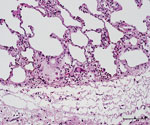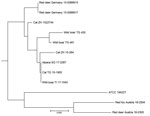
Orlando City (6-1-3, 21 pts), winner of three in a row and five of its last six, will look to keep its place near the top of the league table as the Lions welcome in the New York Red Bulls (4-5-1, 13 pts) to Exploria Stadium this Saturday night. The game, presented by Rasmussen University, is set to kick off at 7:30 p.m. ET, with television coverage beginning at 7 p.m. on FOX35 PLUS and streaming on LionNation TV through the LionNation app. Local radio coverage will be available from 7 p.m. on FM 96.9 the Game in English and Acción 97.9 FM and 810 AM in Spanish.
Here’s everything you need to know about the Red Bulls:
Key Transactions and Player News
Key Additions - CF Patryk Klimala (Celtic), CM Frankie Amaya (FC Cincinnati), CF Fábio (Oeste), GK Carlos Miguel Coronel (Red Bull Salzburg, loan), RB Tom Edwards (Stoke City, loan), CB Andrés Reyes (Inter Miami), LB Andrew Gutman (Atlanta United), CM Wikelman Carmona (Academia Dynamo)
Key Departures - CB Tim Parker (Houston Dynamo), RW Jared Stroud (Austin FC), CF Samuel Tetteh (Red Bull Salzburg), CF Mathias Jørgensen (AGF)
Player News - 17 year-old phenom Caden Clark, who scored the first goal for the Red Bulls in their 2-1 victory over Orlando City back on May 29, has officially been sold to Red Bull Leipzig of the Bundesliga. Clark will finish out 2021 in MLS before joining up with Leipzig in the winter. Leipzig have finished in the top three in Germany in each of the past three seasons and are now coached by former New York Red Bulls manager Jesse Marsch.
Take a look at the Red Bulls’ full roster here.
Team Form
It’s been a largely up-and-down year for the Red Bulls, who have stayed right around the playoff line for most of the year so far. New York has been sharing the love offensively, as each of their past six goals have been scored by a different player. New DP forward Patryk Klimala opened his MLS account on June 23 in a 3-2 loss at the New England Revolution. Most recently, New York picked up its fourth clean sheet of the season this past Sunday in Atlanta, drawing the Five Stripes 0-0.
Head-to-Head
Orlando City’s only loss of the 2021 season came at the hands of the Red Bulls on May 29, when the Lions fell 2-1. With Nani suspended, Daryl Dike still on loan and several other key players injured, the Lions played an unorthodox 3-5-1-1 formation before switching to a 4-3-3 at halftime. Clark and Cristian Cásseres Jr. had the goals for the Red Bulls while Silvester van der Water scored for Orlando. Overall, City is 5-7-2 against New York.
Rasmussen University Fact
Red Bulls’ draw against Atlanta United FC this past weekend was their first of the season, making them the last Eastern Conference team to split points this season. LA Galaxy is the only team left in MLS without a draw in 2021.
The Link LonkJune 30, 2021 at 02:53AM
https://www.orlandocitysc.com/post/2021/06/29/know-your-opponent-new-york-red-bulls
Know Your Opponent | New York Red Bulls - Orlando City SC
https://news.google.com/search?q=Red&hl=en-US&gl=US&ceid=US:en









